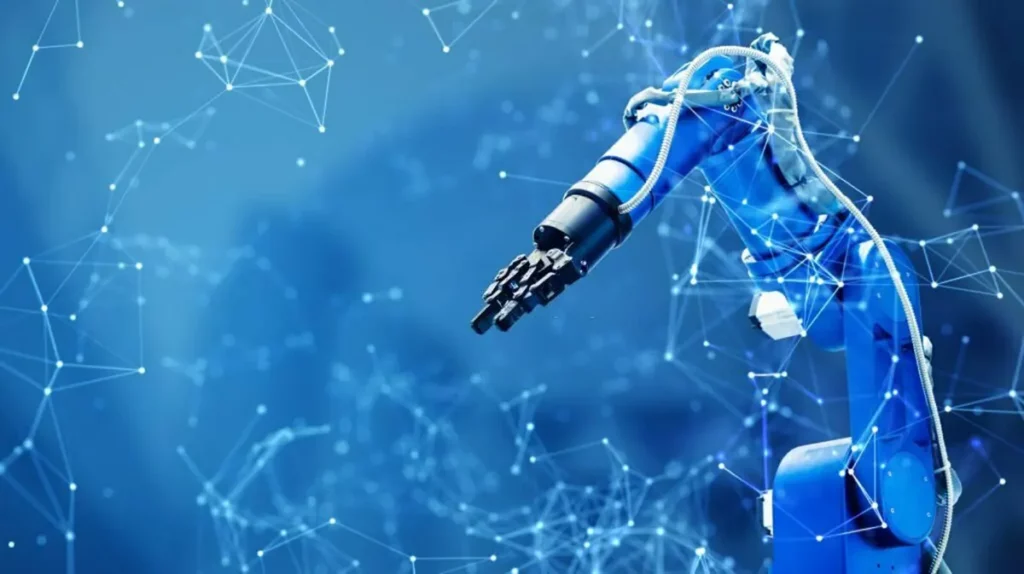في ظل سعي الرؤساء التنفيذيين في قطاع التصنيع لتلبية متطلبات اليوم، مثل تقليل النفايات، تُمثل مبادرات الاقتصاد الدائري خيارًا جذابًا للقادة لتحقيق أهدافهم المتعلقة بالاستدامة والمالية. العديد من الشركات، مثل تفاحة, اتش اند ام و باتاغونياوقد أظهرت الشركات كيف أن ممارسات سلسلة التوريد المستدامة لا تعمل على تقليل النفايات فحسب، بل تعمل أيضًا على تعزيز الأداء المالي والمسؤولية الاجتماعية للشركات.
يتيح التحديث الأخير من Apple لبرنامج الإصلاح الذاتي لمستخدمي iPhone الحصول على قطع غيار مستعملة أصلية. لا تقتصر هذه المبادرة على توفير خيارات إصلاح إضافية لمالكي الأجهزة وإطالة عمر أجهزتهم فحسب، بل تُقلل أيضًا من تأثير Apple البيئي. في الوقت نفسه، تُعالج شركة باتاغونيا أزمة نفايات المنسوجات (أقل من 1% من مادة الملابس يتم إعادة تدويرها إلى ملابس جديدة!) من خلال ضمان أكثر من 80 في المائة تُعاد تدوير أقمشة البوليستر التي تنتجها. أما H&M، فتكافئ عملائها المهتمين بالبيئة بقسائم شرائية عند مشاركتهم في برنامج جمع الملابس، حيث يحولون ملابسهم القديمة إلى ملابس جديدة. الأقمشة المستدامةوتؤكد هذه المبادرات أن الشركات يمكن أن تظل مربحة مع الاستمرار في العمل على تقليل بصمتها البيئية.
ما هو الاقتصاد الدائري؟
الأمم المتحدة تعرف الاقتصاد الدائري مع التحول من ممارسات "الأخذ والتصنيع والتخلص" التقليدية إلى تعزيز نموذج يتبنى "التصميم طويل الأمد والصيانة والإصلاح وإعادة الاستخدام وإعادة التصنيع والتجديد وإعادة التدوير" بدلاً من استخدام مواد جديدة.
نظراً لأن المُصنِّعين يُنتجون كميةً كبيرةً من النفايات العالمية، وتُعتبر النفايات الصناعية الأكثر خطورةً، فإن معالجة إدارة نفايات هذا القطاع أمرٌ بالغ الأهمية. ووفقاً لشركة Zion Market Research، تُمثل الصناعات التحويلية ما يقارب 50 بالمائة من النفايات الناتجة في العالم.
لا تهدر، لا تحتاج: كيفية تعزيز الاقتصاد الدائري من خلال ممارسات مستدامة مثبتة
هل يمكن احتضان الاقتصاد الدائري أن تكون المفتاح لحل مشاكل النفايات التي تواجه الشركات المصنعة، وتقديم نهج مربح ومستدام يعود بالنفع على البيئة والنتائج النهائية
وفقًا للخبراء، نعم، يمكن ذلك. ويؤكد المنتدى الاقتصادي العالمي أن نموذج الاقتصاد الدائري يمكن أن يؤدي ذلك إلى تفعيل التغيير على نطاق واسع بالنسبة للمصنعين ومساعدتهم على خفض النفايات لتلبية متطلبات الأمم المتحدة. أهداف التنمية المستدامة بنجاح. إليك الطريقة:

الأسئلة الشائعة حول الاقتصاد الدائري في التصنيع
ما هي الممارسات الخمس لإدارة النفايات؟
الممارسات الخمس لإدارة النفايات هي تقليل، إعادة استخدام، إعادة تدوير، استرداد، و التخلصتساعد هذه الأساليب في إدارة النفايات بشكل فعال مع دعم أهداف الاستدامة والاقتصاد الدائري.
ما هو الاقتصاد الدائري في التصنيع؟
الاقتصاد الدائري في التصنيع هو نظام يركز على تقليل النفايات و تعظيم إعادة استخدام الموارد. يحافظ على المواد قيد الاستخدام لأطول فترة ممكنة من خلال إعادة التدوير والتجديد والتصميم الدائري.
كيف يساعد الاقتصاد الدائري على تقليل نفايات التصنيع؟
يقلل الاقتصاد الدائري من نفايات التصنيع من خلال الترويج كفاءة الموارد، تشجيع إعادة استخدام المواد، تصميم لإطالة العمر، و استعادة القيمة من مجاري النفايات.
ما هي أمثلة ممارسات الاقتصاد الدائري في الصناعة؟
وتشمل الأمثلة استخدام المواد الخام المعاد تدويرها، تنفيذ برامج استعادة المنتجاتوتجديد المعدات المستعملة، وتحويل نفايات الإنتاج إلى مدخلات جديدة لعمليات أخرى.
كيف يمكن للمصنعين استعادة القيمة من النفايات؟
يمكن للمصنعين استعادة القيمة من النفايات عن طريق مواد إعادة التدوير, إعادة بيع المنتجات الثانوية، توليد الطاقة من النفايات، وتطوير مصادر دخل جديدة من خلال نماذج الأعمال الدائرية.
لماذا يعد تقليل النفايات أمرًا مهمًا لتحقيق ربحية التصنيع؟
يؤدي تقليل النفايات إلى خفض تكاليف المواد الخام، وتقليل نفقات التخلص منها، وتحسين كفاءة العملية، ودعم التصنيع المستدام، وكلها تزيد هوامش الربح والقدرة التنافسية على المدى الطويل.
ما هو الفرق بين الاقتصاد الدائري وإدارة النفايات التقليدية؟
تركز إدارة النفايات التقليدية على التخلص منها بعد الاستخدام، في حين يركز الاقتصاد الدائري على منع النفايات, إعادة استخدام الموارد، و تصميم المنتجات لدورة حياة أطول وإعادة الاستخدام.
كيف يمكن للتصميم الدائري تحسين إدارة دورة حياة المنتج؟
يعمل التصميم الدائري على تحسين إدارة دورة حياة المنتج من خلال إنشاء منتجات سهلة الإصلاح أو الترقية أو إعادة التدوير، تقليل النفايات وإطالة العمر الإنتاجي للمواد والمكونات.
ما هي الصناعات الأكثر استفادة من نماذج الاقتصاد الدائري؟
الصناعات التي تستفيد أكثر تشمل الإلكترونيات والسيارات والمنسوجات والسلع الاستهلاكية سريعة التداول والتغليفحيث يمكن لإعادة استخدام المواد وإعادة التصنيع والحد من النفايات أن يؤدي إلى خفض التكاليف والتأثير البيئي بشكل كبير.
كيف يساهم الاقتصاد الدائري في تحقيق أهداف الحوكمة البيئية والاجتماعية والمؤسسية والاستدامة؟
يساهم الاقتصاد الدائري في تحقيق أهداف ESG والاستدامة من خلال تقليل التأثير البيئي (E)، وخلق قيمة اجتماعية من خلال الوظائف الخضراء (S)، وتعزيز شفافية الحوكمة حول استخدام الموارد (G).


